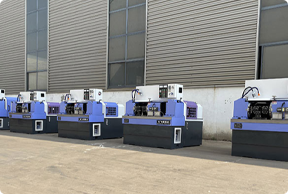
-
 Afrikaans
Afrikaans -
 Albanian
Albanian -
 Amharic
Amharic -
 Arabic
Arabic -
 Armenian
Armenian -
 Azerbaijani
Azerbaijani -
 Basque
Basque -
 Belarusian
Belarusian -
 Bengali
Bengali -
 Bosnian
Bosnian -
 Bulgarian
Bulgarian -
 Catalan
Catalan -
 Cebuano
Cebuano -
 Corsican
Corsican -
 Croatian
Croatian -
 Czech
Czech -
 Danish
Danish -
 Dutch
Dutch -
 English
English -
 Esperanto
Esperanto -
 Estonian
Estonian -
 Finnish
Finnish -
 French
French -
 Frisian
Frisian -
 Galician
Galician -
 Georgian
Georgian -
 German
German -
 Greek
Greek -
 Gujarati
Gujarati -
 Haitian Creole
Haitian Creole -
 hausa
hausa -
 hawaiian
hawaiian -
 Hebrew
Hebrew -
 Hindi
Hindi -
 Miao
Miao -
 Hungarian
Hungarian -
 Icelandic
Icelandic -
 igbo
igbo -
 Indonesian
Indonesian -
 irish
irish -
 Italian
Italian -
 Japanese
Japanese -
 Javanese
Javanese -
 Kannada
Kannada -
 kazakh
kazakh -
 Khmer
Khmer -
 Rwandese
Rwandese -
 Korean
Korean -
 Kurdish
Kurdish -
 Kyrgyz
Kyrgyz -
 Lao
Lao -
 Latin
Latin -
 Latvian
Latvian -
 Lithuanian
Lithuanian -
 Luxembourgish
Luxembourgish -
 Macedonian
Macedonian -
 Malgashi
Malgashi -
 Malay
Malay -
 Malayalam
Malayalam -
 Maltese
Maltese -
 Maori
Maori -
 Marathi
Marathi -
 Mongolian
Mongolian -
 Myanmar
Myanmar -
 Nepali
Nepali -
 Norwegian
Norwegian -
 Norwegian
Norwegian -
 Occitan
Occitan -
 Pashto
Pashto -
 Persian
Persian -
 Polish
Polish -
 Portuguese
Portuguese -
 Punjabi
Punjabi -
 Romanian
Romanian -
 Russian
Russian -
 Samoan
Samoan -
 Scottish Gaelic
Scottish Gaelic -
 Serbian
Serbian -
 Sesotho
Sesotho -
 Shona
Shona -
 Sindhi
Sindhi -
 Sinhala
Sinhala -
 Slovak
Slovak -
 Slovenian
Slovenian -
 Somali
Somali -
 Spanish
Spanish -
 Sundanese
Sundanese -
 Swahili
Swahili -
 Swedish
Swedish -
 Tagalog
Tagalog -
 Tajik
Tajik -
 Tamil
Tamil -
 Tatar
Tatar -
 Telugu
Telugu -
 Thai
Thai -
 Turkish
Turkish -
 Turkmen
Turkmen -
 Ukrainian
Ukrainian -
 Urdu
Urdu -
 Uighur
Uighur -
 Uzbek
Uzbek -
 Vietnamese
Vietnamese -
 Welsh
Welsh -
 Bantu
Bantu -
 Yiddish
Yiddish -
 Yoruba
Yoruba -
 Zulu
Zulu
types of thread rolling
Types of Thread Rolling An Overview
Thread rolling is a popular manufacturing process used to create threads on cylindrical parts. This cold-forming technique involves deforming the material to form the desired thread profile, typically producing stronger threads than those created by cutting methods. Thread rolling produces little waste, making it an efficient and cost-effective choice for high-volume production. In this article, we will explore the various types of thread rolling processes and their applications.
1. Flat Die Thread Rolling
One of the most common methods of thread rolling is flat die thread rolling. This process utilizes two flat dies that apply pressure to the workpiece, which is generally held between them. The dies contain the negative shape of the thread profile. As the workpiece rotates, the dies roll across its surface, gradually forming the threads. This method is particularly effective for creating external threads on cylindrical parts and is widely used in industries like automotive and aerospace, where precision is crucial.
2. Circular Die Thread Rolling
Another type of thread rolling is circular die thread rolling. In this method, one or two circular dies are used to form the threads on the workpiece. The workpiece is placed between the dies and rotated while the dies apply pressure from the sides. This process is suitable for both internal and external threads, offering versatility for various applications. Circular die rolling is advantageous for high-speed production, as it allows for continuous operation and can handle larger volumes of workpieces.
3
. Radial Thread Rollingtypes of thread rolling

Radial thread rolling is a specialized technique often used for forming threads on small diameters and intricate profiles. In this process, the dies move radially toward the workpiece, forcing the material to flow and create the thread. Radial thread rolling is particularly suitable for applications requiring fine threads or when producing very small parts, such as fasteners for electrical components. The precision achieved with this method makes it ideal for industries demanding high-quality threading.
4. Helical Thread Rolling
Helical thread rolling is designed specifically for creating helical threads, which are commonly found in screws and bolts. This process employs helical dies that rotate in a specific manner to produce the desired thread shape. Helical thread rolling can be achieved using various rolling orientations, depending on the complexity of the thread profile required. This method is also valued for its ability to generate threads with precise pitch, which is essential in applications like machinery and construction.
5. Thread Rolling with Tapered Threads
Sometimes, threads need to have a taper for specific applications, such as in piping and plumbing. Tapered thread rolling processes are adapted to form these types of threads accurately. The equipment used in this method can adjust the angle of the dies to create the taper needed. This flexibility allows manufacturers to meet various standards and specifications when producing customized components.
In conclusion, thread rolling is an essential manufacturing process in modern industries, offering several methods tailored to specific needs. From flat die and circular die rolling to radial, helical, and tapered thread rolling, each technique has its unique advantages and applications. As industries continue to evolve and demand higher precision, understanding these differences becomes crucial for manufacturers aiming to optimize their production processes. Thread rolling not only improves efficiency but also contributes to the durability and strength of threaded components, underscoring its importance in the realm of manufacturing.
